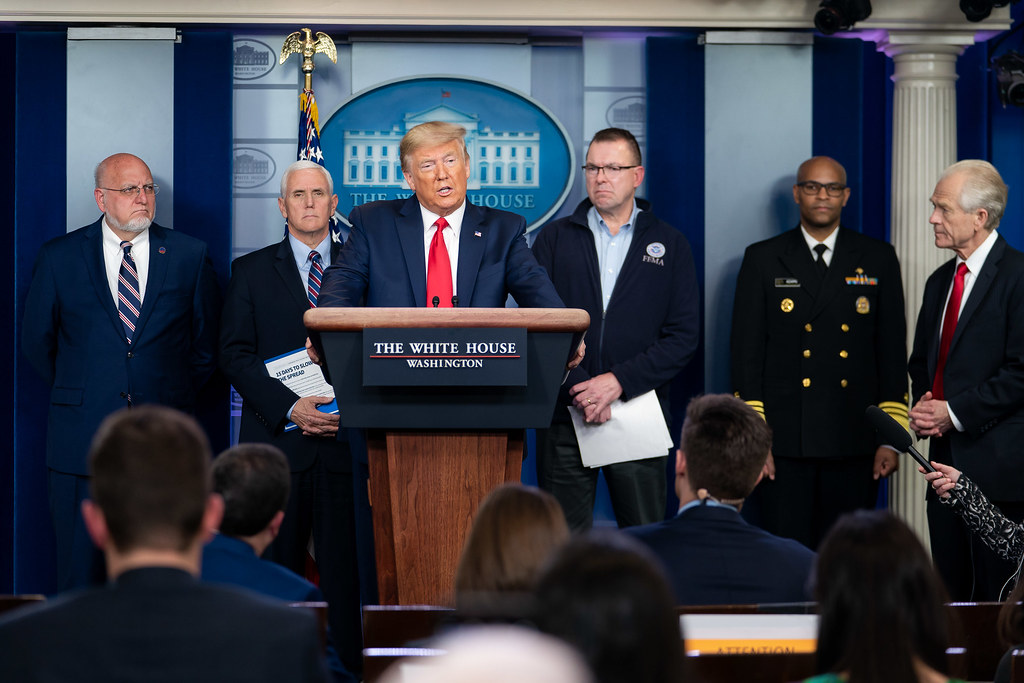
‘We have it totally under control. It’s one person coming in from China, and we have it under control. It’s going to be just fine.’ – President Trump, 22nd January 2020.
Update on the US Election
On the evening of Saturday 7th November, Joe Biden was projected by various media outlets (Sky, BBC, NYT, Washington Post, Wall Street Journal, CNN) to have secured the minimum 270 electoral college votes needed to become the 46th president of the United States. At approximately 01:30 GMT the vice president-elect, Kamala Harris, took to the stage in Delaware as the first female – and first woman of colour – to be elected to the second highest office in the US. Around 10 minutes later, president-elect Joe Biden appeared and gave an extensive, emotive and unifying message to the American people, and to those watching around the globe.
I include this in my COVID-19 Response Report as Biden and Trump have had vastly different attitudes towards managing this pandemic. Trump has been the sitting president during almost a year of coronavirus, but Biden will succeed him. Biden will undoubtedly face the challenge of dealing with the social and economic fallout of the virus, as well as the challenge of uniting an incredibly polarised country.
Current coronavirus situation in the United States
The US surpassed a record 100,000 daily coronavirus cases on Wednesday 4th November, with hospital admissions exceeding 50,000.

Globally, the number of cases stands in excess of 50 million, with more than 1.2 million deaths according to Johns Hopkins Coronavirus Resource Center. As of 8th November, the US had the highest number of cases, at over 9.9 million, and the highest number of deaths, at 237,425. The New York Times reported that on Friday 6th November, there were 136,000 cases recorded – a 57% increase in the last two weeks.

The handling – or rather mishandling – of the coronavirus pandemic stems largely from Trump’s inability to acknowledge this virus as something which will be prevalent for the foreseeable future. He has referred to the virus as ‘the flu’ on multiple occasions, and said over 40 times that the virus will merely ‘go away’. He has displayed a reluctance to follow the science, particularly when it comes to wearing masks.
These numbers depict a telling reality of coronavirus in the US. Trump’s administration has been unable to control the virus, much like in Europe, but on a scale unlike anywhere else in the world. With the most cases, and the most deaths, living with coronavirus in the US will not be plain sailing. What will be interesting, is how Biden and his administration handles this pandemic and how this approach differs from Trump.
On the 2nd October, after months of downplaying the virus, President Trump and First Lady Melania tested positive for COVID-19.
During the first presidential election debate on the 29th September – merely a few days before testing positive for coronavirus – Trump spoke proudly about how he’s held large MAGA rallies during his campaign, declaring ‘We have tremendous crowds, as you see…We had no negative, no negative effect. We’ve had no negative effect, and we’ve had, 35-40,000 people at some of these rallies.’ He also attacked presidential candidate Joe Biden, stating ‘I don’t wear masks like him. Every time you see him, he’s got a mask. He could be speaking 200 feet away from them and he shows up with the biggest mask I’ve ever seen.’
Approach towards dealing with coronavirus
Trump’s approach could be viewed as simply wanting to get on with the virus. He has reopened the economy, and encouraged citizens to proceed with work and enjoy life and freedoms. But the distain to which he gives the media during news briefings, mocking them for wearing masks or wanting to social distance, even telling a reporter to take off their mask during a White House briefing in early September, depicts an alarming disregard for the deadly reality of the virus.
Lockdown measures by which Europeans understand them were different in the US. The federal system of government in the US means that individual states could determine whether a stay-at-home order was necessary, and thus whether it would be introduced. According to the Centre for Disease Control and Prevention, the nation’s health protection agency, 42 states and territories issued mandatory stay-at-home orders between 1st March and 30th May. The CDC notes that because of a variation in the implementation and enforcement of state level stay-at-home orders, the movement of people between county and state lines varied. Of these 42 states and territories issuing mandatory stay home orders, 73% of the 3,233 U.S. counties were affected. This state-level approach allowed governors to assess the situation in their own state, instead of issuing a blanket, nationwide federal lockdown.
Many states began lifting virus lockdown orders as early as late April, where Alaska was the first. Governors warned that life would not return to normal with these restrictions lifted. In a country where limited government, individualistic attitudes, and absolute freedoms are central pillars of society, the continuation of mandatory lockdown orders were contentious and dependent on individual state governors’ assessments of the severity of the virus.

To date, the CDC reports that there have been over 154 million tests performed, a staggering number – yet there is no federal system of contact tracing in place. Arguably, if this had been offered to states, akin to the NHS app in the UK and the StopCovid app in France, we might have seen a reduction in cases when the economy reopened in late April. The lack of essential contact tracing in the United States is arguably Trump’s biggest failure in combatting the spread of coronavirus. There is an acceptance now that outbreaks of the virus in places such as Florida and Texas are too widespread for public health agencies to be able to successfully trace. There are accounts also that it is taking too long to get test results back from the lab, as Vox reports that ‘America’s coronavirus testing continues to fall short relative to the size of the outbreak.’
The hardest hit places in the US are important to look at. The north east experienced the extreme in spring, with temporary morgues erected in NYC. The NYT reports that by autumn, the virus was filling rural hospitals in the Midwest and West of the US. In Cook Country, Illinois – which includes Chicago – there have been more than 5500 deaths. In Los Angeles County, California, more than 300,000 people have had the virus – alarmingly more than in the majority of states. In the summer, cities along the US-Mexico border had some of the highest rates of cases.
Cases in colleges and universities have exceeded 252,000 in at least 1600 colleges over the course of the pandemic, with thousands identified in elementary, middle and high schools. Figure 4 below shows how the virus has drastically impacted the east of the US, almost disproportionately compared to the west. Florida, Clemson and Georgia colleges have all had at least 4000 cases.

According to the US State Department’s website, over 100,000 US citizens have been repatriated since the start of the pandemic, and an additional $128 million in global health and humanitarian assistance has been provided. Since the outbreak, the US government has announced more than $1.5 billion in State Department and US Agency for International Development (USAID) emergency health, humanitarian, economic, and development assistance specifically aimed at helping governments, IGOs and NGOs fight the spread of the virus.
The president’s Coronavirus Task Force was established on 29th January of this year, months before Trump publicly acknowledged the spread of the virus in the US. Vice-president Mike Pence was named as chair of this taskforce less than a month later. Biden is set to announce on Monday his own coronavirus taskforce, formed of 12 co-chairs and featuring some of the nation’s best advisers. This is set to be the start of a myriad of announcements aimed at regaining control of the pandemic and providing clear scientific advice and a sense of truth during an age of misinformation.
Overall US response
The United States, one of the most highly developed countries in the world, has fundamentally lost control of this virus.
For a country with MNCs pioneering several vaccines – along with some of the best quality healthcare in the world – to be the worst affected in terms of cases and deaths, is unquestionably down to a failure in leadership from the Trump administration, but also down to a personal failure of Trump in taking it seriously.
We have all become familiar with the ‘Karens’ being exposed on social media platforms, refusing to wear masks in shops and restaurants. This rhetoric of the individual American having autonomy of themselves has arguably gone too far. It makes a mockery of the ‘common good’ which democracies seek so hard to protect in society.
The handling of this virus is an absolute embarrassment.
What gives me hope, however, is that Biden will take hold of the mess the Trump administration has created and give a clear sense of direction in controlling the spread of this virus.



Average Rating